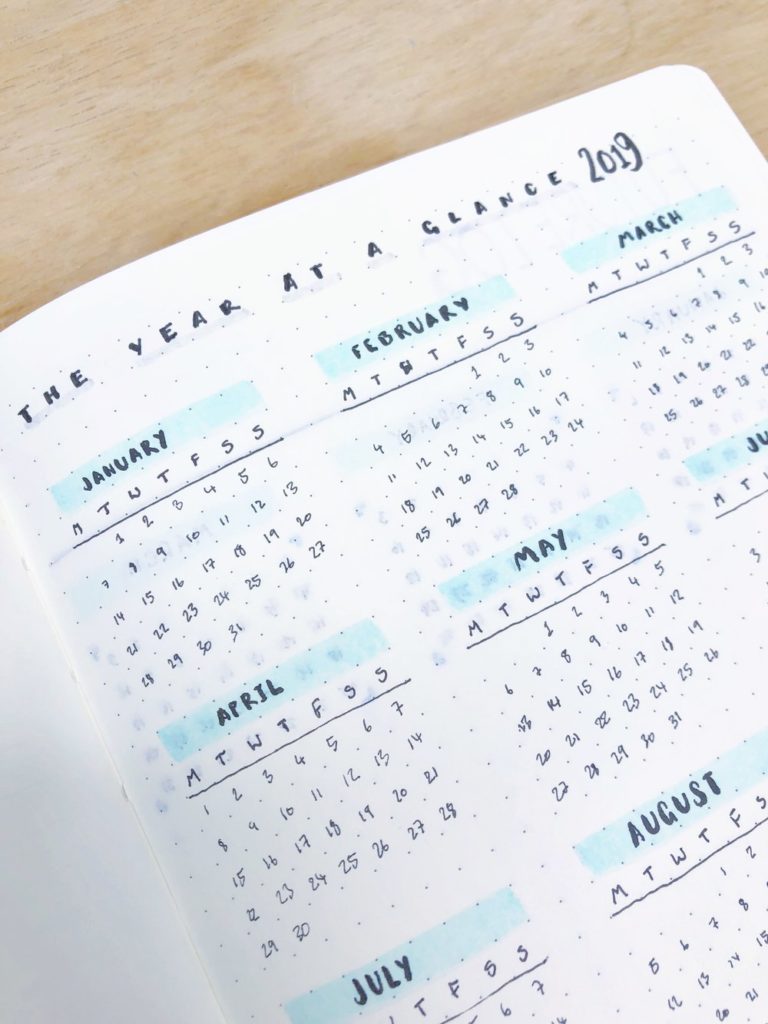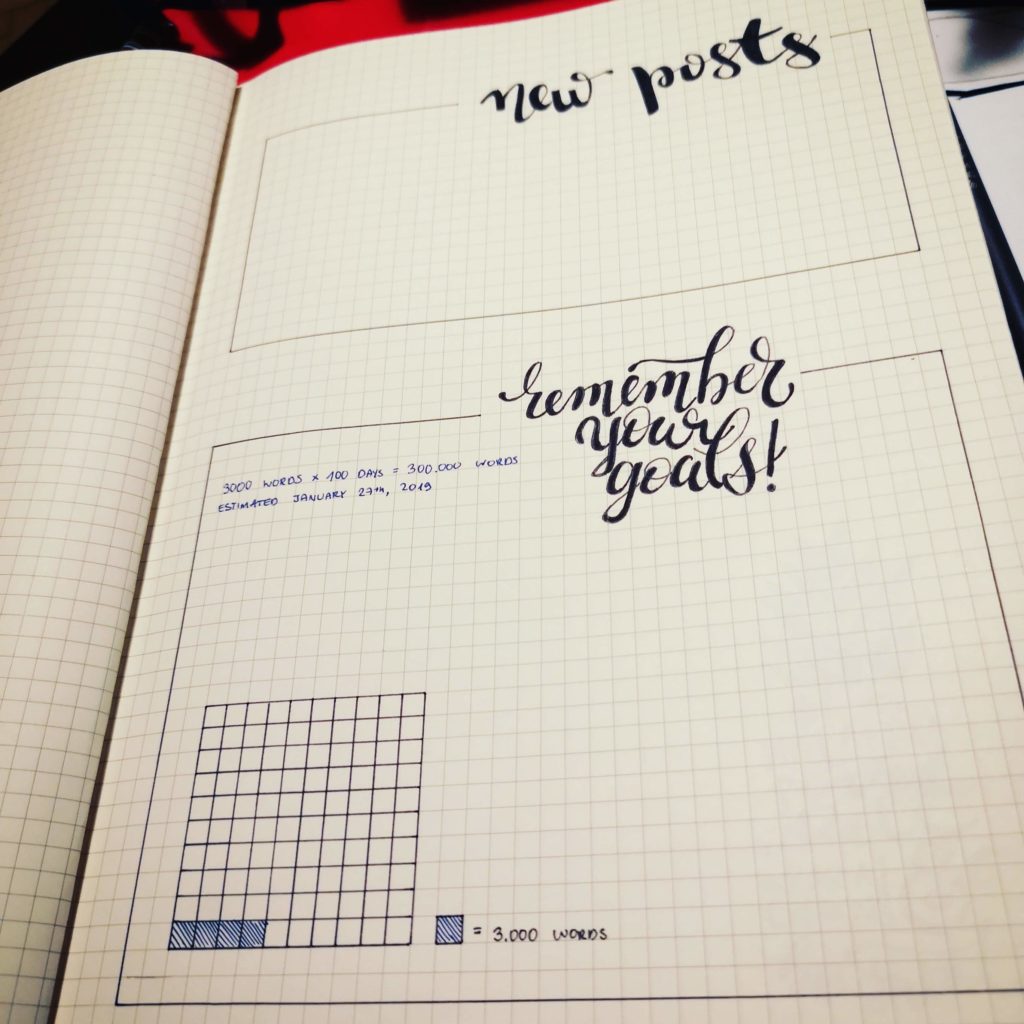Since many people with ADHD will also have writing difficulties or dyslexia, these magazine supplements can be a problem for some. For someone with ADHD, the diary advice structure can be really helpful as it will tell you where to start journaling. In addition to other strategies to help with ADHD, such as medications and therapy, journaling can help with many of the brain’s problems associated with focusing and organizing information.
Why Bullet Journal Is Helpful For People with ADHD?
Journaling can be helpful for people with ADHD who want to better deal with their life problems. Designed specifically for people with ADHD, these magazines provide a comprehensive framework for addressing these issues. But don’t despair. You can find help for ADHD with the Bullet journal. It helps you jot down all the different thoughts that pop into your head about everything from deadlines, goals, to-do lists, emotions, priorities to expressing your frustration.
Bullet Journal Structure
Bullet journal ADHD association is common. Keep it simple for a few months, and if time permits, start practicing with themes and other ideas. The Bullet Journal is a great tool to help you manage your ADHD symptoms. It can help you get all the thoughts out of your head, so you don’t go to bed at night thinking about everything you need to work on. When you have ADHD, the thought of sitting down and peeing can overwhelm you. Having a limit or goal is helpful because you know there is an end, and you won’t be there all day.
If you are upset about something, you can write more or come back later for a second meeting. However, the diary allows you to press the pause button in your life. Keeping a diary every day is great, but don’t postpone it if you miss a day.

Just start writing, and you will develop a system that will work for you. All you really need to get started is a blank notebook or diary and a pen. You will need a clean diary or journal with a dotted grid and a few pens to get started.
How To Choose The Right Bullet Journal?
Start with any type of notebook or a blank journal. Divide your notebook into sections or categories that you want to include. You can make a shortlist of things that you would like to keep track of so that you have an idea of what pages you will create in the beginning.
Get On Top of ADHD With Bullet Journal
Bullet Journal is also a way to organize your work and help you prioritize and manage your time, make appointments, create to-do lists, and more. All the collections I will share are not unique to this system, but they are easy to borrow. And add it to your diary as you see fit. In addition, the beginning of the diary contains a detailed table of contents, allowing you to quickly track what is in the diary and where to find it. This pointer is usually very complex and uses symbols and comments to keep it organized.
The system is also based on several labeled symbols to help you quickly see what’s on your plate every day. It helps to simplify your life and visually assess your priorities.
For example, you can create a list of books you want to read by adding books to the list as you study them, so you don’t forget to look for them later. To figure out which method of building a to-do list is best for you, Carroll suggests starting with a very minimal to-do list and index, then gradually adding more symbols or pictures to see what helps you remember to return to the to-do list. Daily. For example, you might have a weekly spread with Monday through Sunday days recorded as a planner and various activities, events, and notes written underneath each day. Tasks to be completed receive a symbol, events are assigned a different symbol, and they annotate a different symbol again.
Bujo For Good Housekeeping
In the spirit of the Marie Condos KonMari method, I use postcards, mostly collected from art exhibitions, to make the notebooks special and enjoyable to use. I always add an index entry or add a page number to an existing entry before adding content. Instead, I could leverage the monthly magazine that I include in my weekly review.

Keep that system in the next magazine if you enjoyed how weeklies helped you create a to-do list. These reversals will help you focus and complete things that are easy to forget. Future magazines, weekly, monthly, and even daily spreads, are especially useful in a summary journal. To see examples of this, check out my article 50 Habit Tracking Ideas for Your Bullet Journal. Several reversals are especially helpful for people with ADHD.
You can easily schedule meals in your diary and know what you will eat during the week. You can also use brain dumps to prioritize to-do lists and help deal with the overwhelming feelings people with ADHD have when they realize their to-do list is too long and they don’t know what to do.
Where to start
All the thoughts “I have to do this” and “I have to make sure that I remember this” absorbs energy and causes depression, but recording them helps to control the noise.
I recommend reading The Bullet Journal Method by Ryder Carroll, the creator of the system (who also has ADHD!).
In addition to the commonly used bujo (short for bullet journal) terminology, you’ll learn that the system is not only for planning your day, tracking activities, or creating beautiful artistic pages that you might see on the Internet.
You just need to think about what you liked the most and how it might be useful in a new diary. If you love consumables, you will use the diary every day. Before you start, here is a list of recommended consumables. Bullet Journal is a memory diary/planner hybrid that can help the most disorganized people get organized. This is a completely separate diary that contains all your beautiful and neat collections.
It’s hard to go along with buying a brand new diary just for this purpose and remember to use it. If you live with ADHD, it’s easy to give up keeping a diary. At first glance, it seems to include everything that is difficult for you, such as sitting, writing, concentration, and daily discipline.
Conclusion
Creating a diary and keeping a journal can seem overwhelming for some people with ADHD, which is why many people never start. Bullet journal Managing ADHD can help combat forgetfulness, thought overload, and help you stay on top of things. If I find it difficult to get to work or feel like I have so much to do and don’t know where to start, Bullet Journal can help me create a workable plan that will help me achieve much more than I originally thought.
I am grateful for what the bullet journal system has helped me learn about myself and accomplish, and I am looking forward to seeing what 2022 will offer.
The bullet journal system also aids in the combination of different organizational tools into one easy-to-use resource.
The bullet journal is a journaling system that employs a combination of customized daily, weekly, and monthly diaries to help you be more productive.
How Bullet Journal Can Help You Stay Organized Despite ADHD?
Bullet journaling is also a system for getting organized, and it can help with prioritizing and managing your time, scheduling appointments, setting to-do lists, and so on.
But don’t be too hard on yourself; bullet journaling can help you with your ADHD.
Before we begin, here is a list of my recommended materials.
The bullet journal is a hybrid memory-keeping journal and planner that can help even the most disorganized people get organized.
brains #adhd #journal #bullet
How to use the Bullet Journal with ADHD?
Persons with ADHD frequently miss these things, and the bullet journal can serve as a reminder.
Finally, even though we badly need structure in our life, the ADHD brain does not frequently do well with it.
Based on my observations, I feel the bullet journal is designed for non-linear, restless ADHD brains like mine based on my observations.
Our brains enjoy answering questions, and your creative adhd brain will come up with excellent answers to every question you ask it.
will #help #in #completing #weekly #tasks
How Bullet Journal Spreads Help You Complete Tasks?
These spreads will help you in staying on time and completing things that are easily forgotten.
In a bullet journal, future logs, monthly weekly, and even daily spreads are extremely valuable.
It will help you memorize and complete tasks, keep tracking of extra ideas and thoughts, and make planning easy.
While not everyone with Attention deficit hyperactivity disorder finds these especially useful, for those with irregular schedules, they will help you stay on top of everything.
You don’t have to use all four options, but I highly advocate using a future log and at least a monthly or weekly planner.
keep track #assist #journal #can #tasks
How To Customize Your Bullet Journal?
The bullet journal can be customized, but it has four key components: an index that helps you keep track of what you have written in your journal and where to find it, a section to jot down future tasks and events, a monthly calendar, and a daily task list.
Journaling can be a helpful strategy for keeping track of everything and all the projects you have going on.
A bullet journal that looks nice but does not help you organize, prioritize, plan, or keep track of things is not your ideal bullet journal. People with adhd frequently miss these things, and the bullet journal can serve as a reminder.
Finally, even though we require structure in our lives, the ADHD brain does not always respond well to it.
Here are three basic reasons why the bullet journal can help students who have faster brain movements than normal.
journal #system #bullet #will #help
How does Bullet Journal work?
You may also use brain dumps to prioritize your to-do list and help the overwhelming feeling that people with attention deficit disorder get when they discover their to-do list is way too lengthy and they don’t know where to begin.
The brain dump approach (discussed later in how to journal) is a terrific way to get these thoughts out of your mind to promote clarity.
When using a brain dump as a way to help with your to-do list, go ahead and spill out anything that you see you need to get done.
#bujo #can #keep #bullet #help
What do you need to get started with the bullet journal method?
Before we begin, here is a list of my recommended supplies.
The bullet journal is a memory-keeping journal and planner hybrid that can help even the most disorganized people get organized.
To get started with bullet journaling, first decide what you want to keep track of.
Unfortunately, many people with Attention deficit hyperactivity disorder never get started with bullet journals because they require some time to set up and get into the habit of using.
Things such as a bullet journal can aid in the completion of activities and the management of ADHD.
Persons with attention deficit disorder frequently neglect these things, and the bullet journal can provide those reminders.
Finally, even though we require structure in our lives, the ADHD brain does not always respond well to it.
The bullet journal can be customized, but it has four major components: an index that helps you keep track of what you have put in your journal and where to find it, a section to jot down future tasks and events, a monthly calendar, and a daily task list.
More than just your daily tasks, the bullet journal can help you to remember household tasks like cleaning appliances, changing filters, or checking for lint in your dryer vent.
Is Bullet Journal for ADHD management effective?
Bullet journal ADHD management can help you control forgetfulness, overwhelming help, and stay on top of the task.
Before we begin, here is a list of my recommended supplies.
The bullet journal is a memory-keeping journal and planner hybrid that can help even the most disorganized people get organized.
Bullet journaling is also a system for getting organized, and it can help with prioritizing and managing your time, setting up appointments, establishing to-do lists, and so on.
Data analytics expert. As an analyst and project manager, I have proven to be a strong leader and team player in maintaining a suitable workspace for workers and industries in the oil and gas sector.
By taking into account various factors, with the assistance of state of the art technologies and the utilization of Big Data Analytics.
This includes considering various aspects like volume, velocity, variety, veracity, value together with complexity.
With the recent advent of data recording sensors in exploration, drilling, and production operations, oil and gas industry has become a massive data intensive industry.






